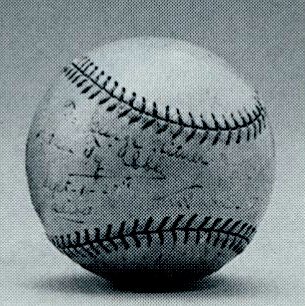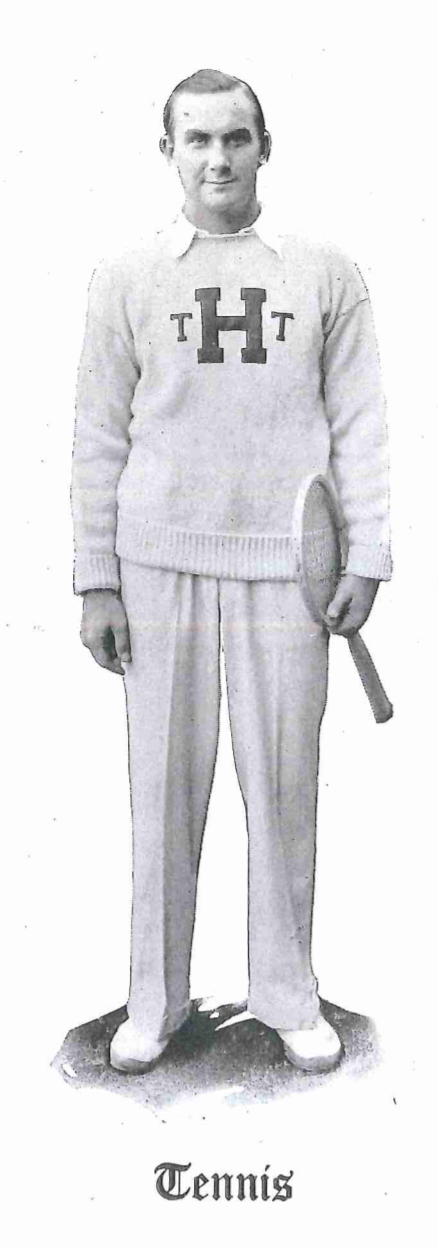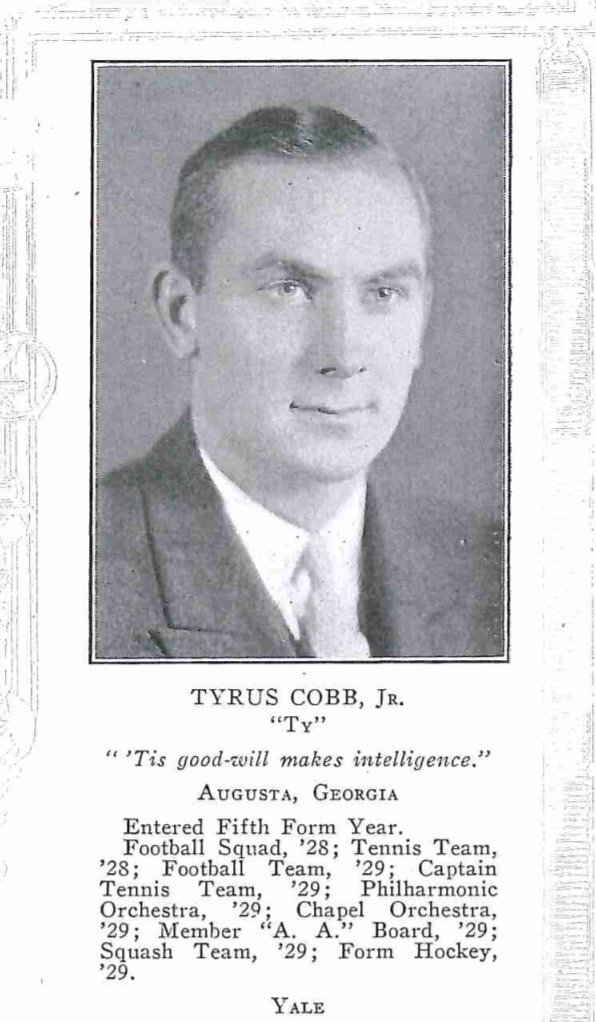AN Extraordinary Collection of signed Ty Cobb cards
In February 2020, a signed T206 Green Cobb sold for a record-breaking $144,000 in Heritage Auctions. No other autographed T206 card had ever sold publicly for more than $50,000 in history. The original catalog listing is above, and you can see the completed on-line auction for yourself by clicking HERE or on the image below.
I have been following the travels of this beautiful card for some time. The previous time it was sold publicly, it sold for $4,180 ($3,800 + 10% buyer’s premium) as Lot #664a in the February 22-23, 2002, Hunt Auction below.
You can see the completed on-line auction for yourself by clicking HERE or on the listing above.
In the auction description, Hunt explained that this card was “[o]riginally discovered with an estate collection of T-206 cards including (5) signed Ty Cobb cards and the original envelope of Cobb's in which they were mailed.”
I have wondered for nearly two decades where the rest of these signed T206 Cobb cards may be, but with the substantial help and assistance of Kris Sweckard, I have finally figured out where they came from and what they look like.
Kris shared with me a Hunt Auction catalog from August 11-12, 1995. Indeed, just 7 years before the Green Cobb sale, Hunt had previously auctioned the other 4 signed Ty Cobb T206s, as well as a signed T205 Cobb and a signed T202 Cobb, with the an original mailing envelope from Ty Cobb postmarked June 12, 1940, and a Hassan cigarette pack from which the T202 was supposedly pulled.
The prices realized, including a 10% buyer’s premium, will make you wish you had a time machine: Bat Off ($715), Bat On ($1,485), Red ($1,980), Green ($1,017.50), T205 ($1,650), and T202, including original Hassan pack and Cobb’s envelope ($2,860).
I recently reached out to David Hunt to ask him to confirm whether the signed T206 Green Portrait Ty Cobb card that Hunt sold in 2002 was from the same collection from which Hunt sold 4 other signed T206 Cobbs on August 11-12, 1995. David replied, “It has been a long time ago, but, it is my recollection that the green signed Cobb was in fact from that same collection and given to us at a later date. I noticed it sold recently, and did quite well.”
George HITNER Collection
George W. Hitner (1902)
The T202 (mis-identified as a T212) sold for $17,302 in SCP’s January 28, 2009 auction, which listing you can see by clicking HERE. The listing provides a little more information about the timing of the signatures — “Lot includes the original return envelope from Ty Cobb postmarked June 12, 1940.” However, it also raises a question — the envelope is addressed to a “George” in Pennsylvania, but not the George Sands referenced in the 1995 catalog. Instead, the envelope is addressed to George Hitner at the Hill School in Pottstown, PA. Mr. Hitner was a mathematics master and registrar at the Hill School, and according to public records, he died in 1944.
On October 17, 1992, just a few years before the 1995 Hunt Auction above, Christie’s East sold two additional items from the George Hitner collection — a baseball with a signature dated September 1, 1928; and a book about Cobb that was published in 1928. The Official American League ball was inscribed “To George Hitner from Ty Cobb Sept. 1 ‘28 adios.” The book is titled “Ty Cobb The Idol of Baseball Fandom” by Sverre O.Braathen and is inscribed on the inside cover “To Geo. W. Hitner ‘In Sincere Friendship’ Tyrus R. Cobb Oct. 10-28.” Reviewing on-line resources, it is evident that the signed ball and book sold below estimate for just $2,200!
So, who was George Hitner? Fortunately Mr. Hitner graduated Yale in 1902, and there is a lot of publicly available information today on members of that class. For instance, below is Mr Hitner’s portrait in the Yale 1902 Class Book, when he was a senior.
Interestingly, there is a reference to Mr. Hitner being an “umpire of the Interappointment Series,” which was a series of baseball games between the men receiving the different degrees of scholarship appointments. A summary of Mr. Hitner’s life and career was published in a book published by Yale in 1913, entitled “Achievements of the Class of 1902." The summary shows that Mr. Hitner was not only an umpire in that series, he was also a player. It is obvious that Mr. Hitner was highly interested in baseball, and this would foreshadow his meeting with Ty Cobb a bit later in his life.
Mr. Hitner collected Cobb autographs from 1928 to 1940. 1928 is a critical year in this chronology because it was Cobb’s last year as a player. And Cobb moved to Philadelphia in 1927 in order to play for Connie Mack’s Philadelphia Athletics in 1927, in the twilight of his legendary 24-year career. As we can see from his obituary (also published by Yale University), George Hitner taught at the Hill School in Pottstown, PA from 1903 to 1942. This means Mr. Hitner lived a short drive away from Philadelphia in 1928.
More importantly, Mr. Hitner and Cobb were acquaintances because Cobb’s son Ty Cobb Jr. attended the Hill School in Pottstown, a fact proven true by the 1930 yearbook of The Hill school (called “The Dial”), throughout which Cobb’s son was featured as a member of the tennis and football teams. Mr. Hitner was included in the same yearbook.
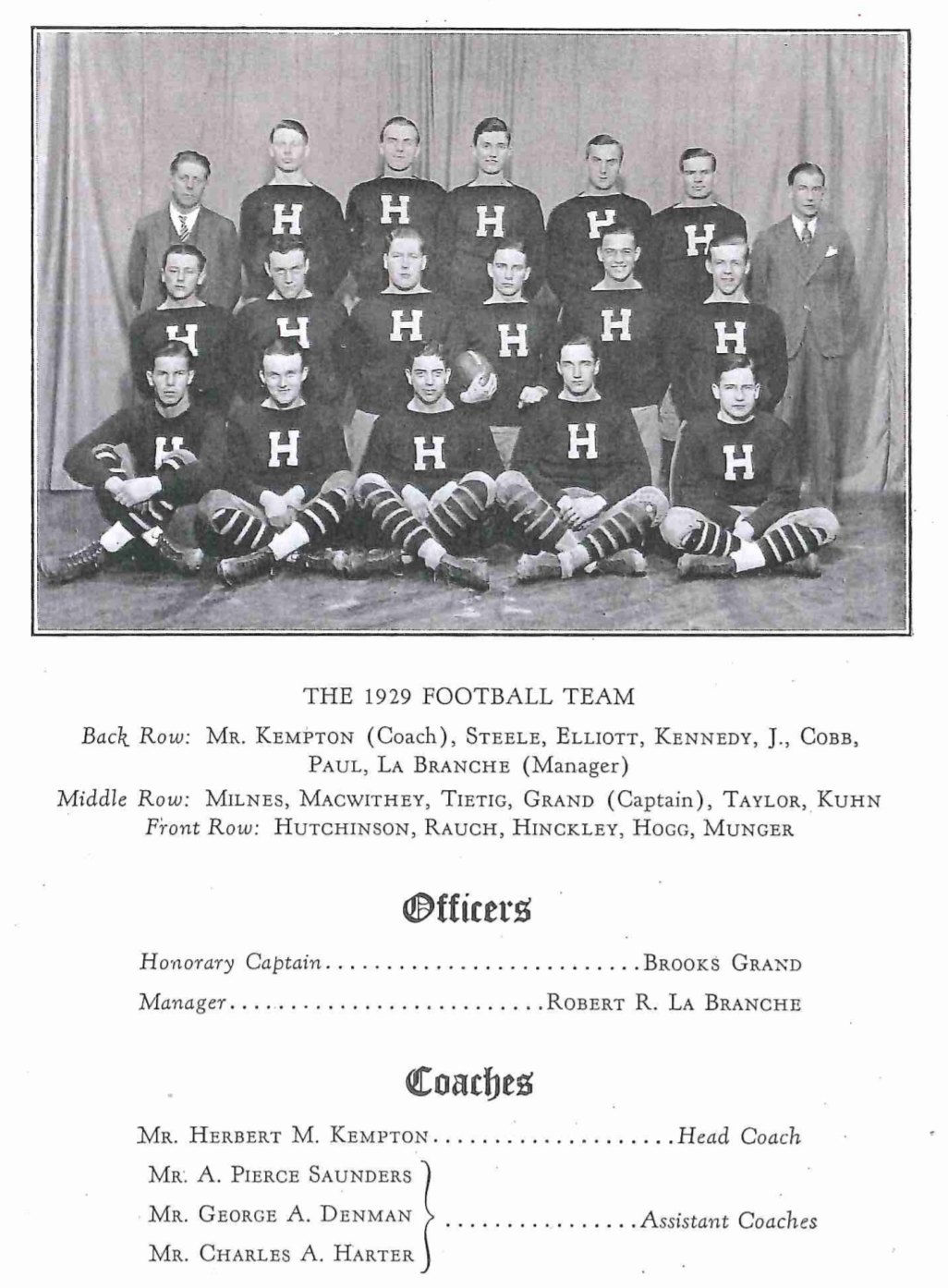
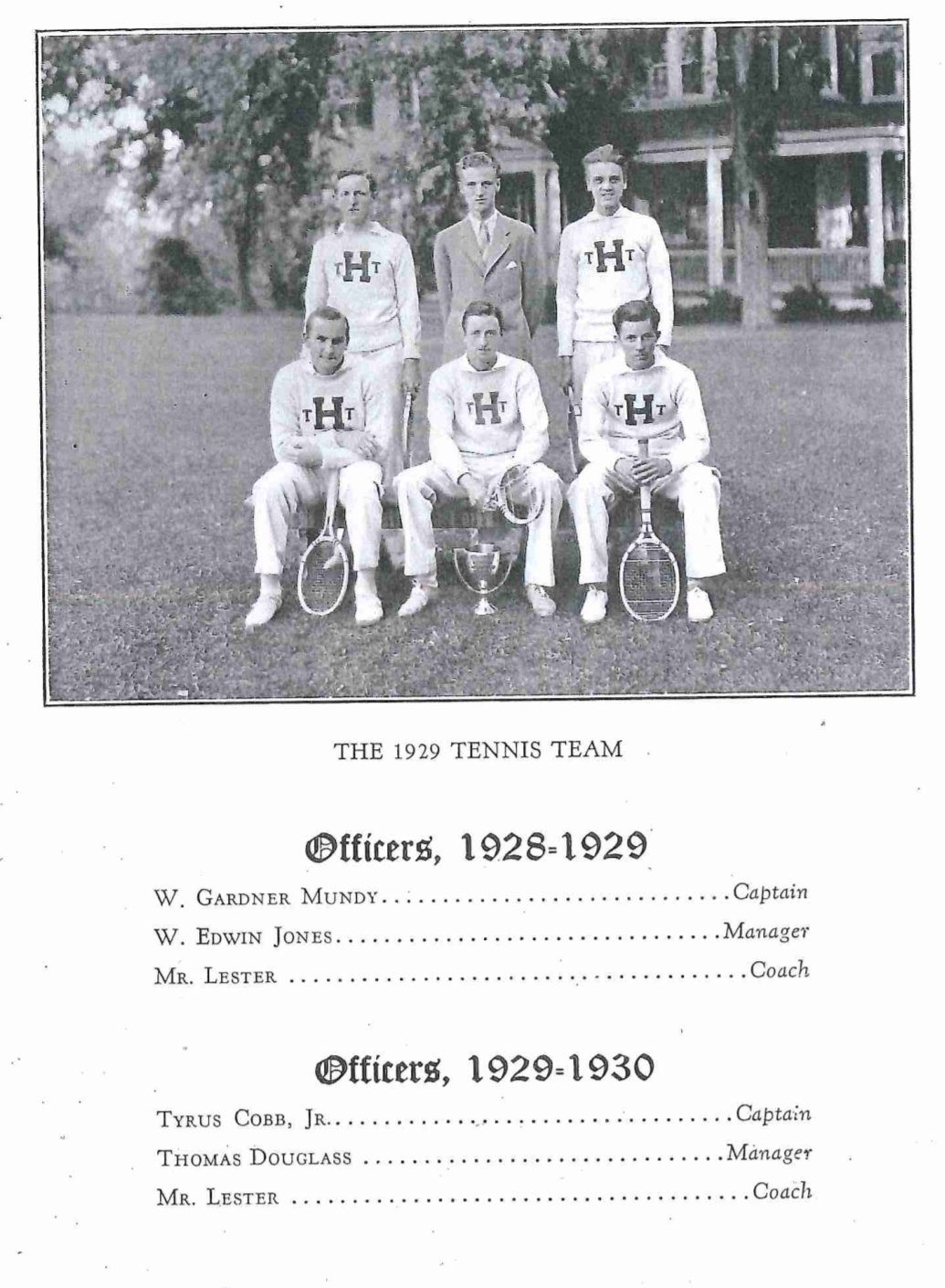
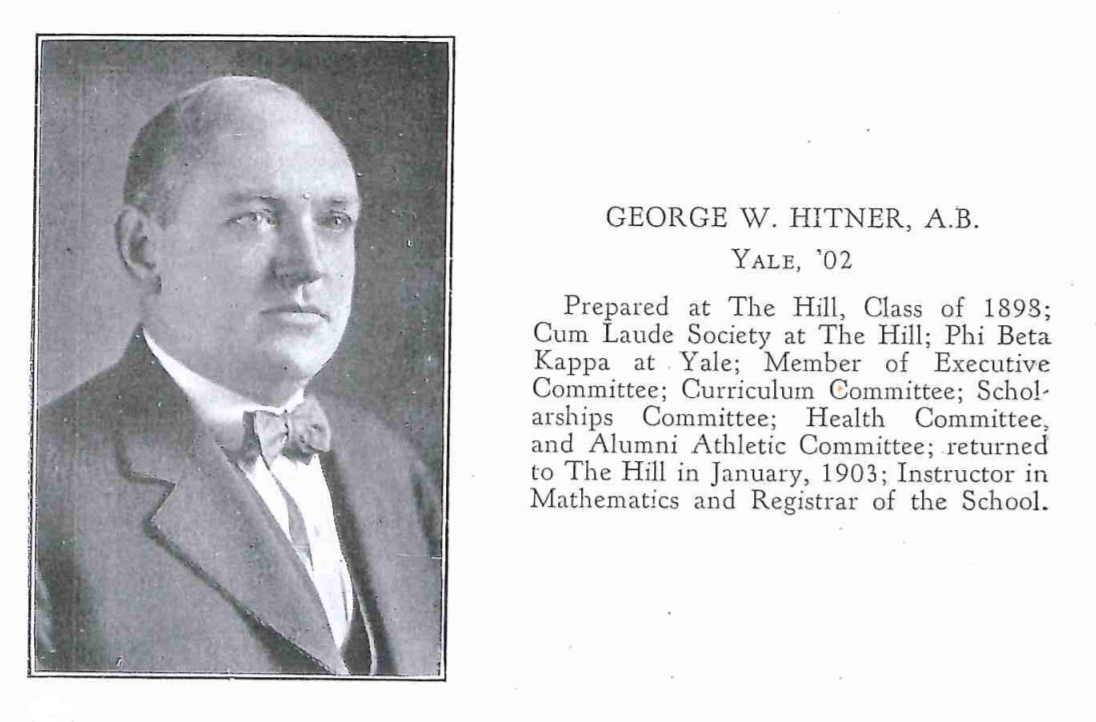
Published reports note that Ty Cobb Sr. and Mr. Hitner were at least acquaintances, if not friends. Indeed, newspaper articles show that Cobb was a guest of Mr. Hitner on October 4, 1929, to watch his son play football as “a star halfback on The Hill eleven.”
Pottstown Mercury, October 4, 1954.
In fact, on the same date that Cobb signed a contract to play with the Athletics (February 8, 1927), Mr. Hitner attended a Sports Writers Banquet in Philadelphia, where Cobb announced his intention to play for the Athletics in 1927. The article notes that Hitner is “a close friend of Ty Cobb” and was looking forward to being on hand for Cobb’s “announcement of his 1927 plans.” Tris Speaker, Eddie Collins, and other players also were scheduled to attend.
Lancaster New Era, February 2, 1927.
The Athletics played a home game on September 1, 1928 — the date on which Cobb signed that baseball for him, perhaps from the field at Shibe Park.
Ty Cobb signs autographs for Philadelphia Athletics fans from the field at Shibe Park in 1927.
It would be one of the last signatures given during his playing years, as Cobb’s last Major League appearance came just 10 days later. On October 10, 1928 — the day after the last game of the 1928 World Series between the Yankees and the Cardinals — Mr. Hitner got another signature from Cobb, this time on the book “Ty Cobb: The Idol of Baseball Fandom” that was published that year. Perhaps the autograph was given during a formal book-signing.
12 years later, Cobb — now living in now living in Menlo Park, CA — granted Mr. Hitner’s through-the-mail request to sign his collection of Ty Cobb tobacco cards.
A 61-year old George Hitner is captured in his The Hill School faculty picture (below) in the 1940 issue of The Dial, which is the school’s annual yearbook. A reference to Mr. Hitner’s appearance on the Alumni Athletic Committee hints at Mr. Hitner’s passion for baseball. Cobb mailed his signed tobacco cards to Mr. Hitner at The Hill School just four years before Mr. Hitner’s death. Mr. Hitner is nothing short of one of the most early and consistent pioneers of baseball autographs.
Mr. Hitner’s obituary, published by Yale University, is below.
At some point, Mr. Hitner’s collection of signed Ty Cobb tobacco cards made their way to another collector named George — in this case, George Sands — who is referenced in the 1995 Hunt catalog. I asked Mr. Hunt whether he could recall how the signed cards that were sent to Mr. Hitner made their way to Mr. Sands. Mr. Hunt explained, “I wish I could tell you that I recall the connection but simply don’t. Very, very vaguely…I do remember something about the name difference where-in Sands somehow was acquainted or knew Hitner. That said, it has just been too many miles on this engine for me to recall the specifics.” So, I think it fair to say that Mr. Sands acquired Mr. Hitner’s collection of cards signed by Mr. Cobb. Unfortunately, the trail of provenance is likely to fall short of an actual confirmation of what was in all likelihood a casual baseball card transaction that probably took place some time after Mr. Hitner’s death in 1944, perhaps through his wife, son, granddaughter, or sister, each of whom survived Mr. Hitner.
In addition to the T206 Green Portrait Cobb and the T202 Cobb, at least three others have made it to a public auction block since their original sale in 1995, the first two without any reference to the collection from which they originally came. For instance, the signed T206 Cobb “Bat Off” pose was auctioned by Heritage in August 2016 for $33,460. Thus, we have a majestic high-definition technicolor image to enjoy:
And, the signed T205 showed up in the April 26, 2007 Mastro Auction:
As I was putting together this article during the COVID-19 pandemic — perhaps encouraged by the record-breaking price of the Green Portrait in February 2020 — the signed T206 Red Cobb from the Hitner collection also found its way into a Heritage Auction in August 2020. You can see the card below and the staggering results of this auction HERE. As you can see, Heritage reviewed the provenance that I had produced following the sale of the Green Cobb and included it in its auction listing. This might explain why the Red Portrait outpaced the Green Portrait by nearly $50,000 more just six months later — landing at a whopping $192,000! That is the value of provenance.
In addition, Ron Keurajian included a photo of the T206 Red Cobb as Exhibit 1 in his 2012 book, Baseball Hall of Fame Autographs: A Reference Guide:
In his book, Keurajian wrote, “Today the handful of genuinely signed Cobb T-206 cards that exist are true gems of the hobby. I have examined four genuine specimens. Exhibit 1 is a nicely signed T-206 specimen. These are very rare and have an estimated value of $20,000 to $25,000, but in an auction could go much higher.” Keurajian also referenced the signed T202, acknowledging that, “A rare T-202 triple fold card of Cobb and George Moriarty signed by Cobb sold for $17,300 in 2009 (SCP Auctions).”
This might also explain why Keurajian was willing to share with several hobbyists that the Green Cobb was authentic:
This clip was pulled from HaulsofShame.com, but note that the T206 Red Cobb here is not the same one from the 2020 Heritage Auction or 1995 Hunt Auction, which also is featured in Keurajian's book. The Red Cobb directly above resides in an unidentified private collection.
For sake of completeness, below is a color image of the signed T206 Cobb “Bat On” pose from the Hitner Collection that I have had on file for over a decade.
I am not sure where I found this image, or where this card currently resides. If you have any information about where this Cobb, or any of the Cobbs, resides today, please keep me posted. It is important to keep the history of these pricey (priceless) artifacts in place for the future collectors who will inherit these over time. I am still missing a color scan of the signed Green Cobb from the 1995 Hunt Auction. Perhaps because Mr. Hitner was able to get two T206 green Cobbs autographed, the Estate of George Sands decided to separate the two Cobbs from the auction block, or even just kept one of the doubles as a memento for several years. In any event, I would be more than thrilled to include any additional information that is relevant to Mr. Hitner’s extraordinary collection.














